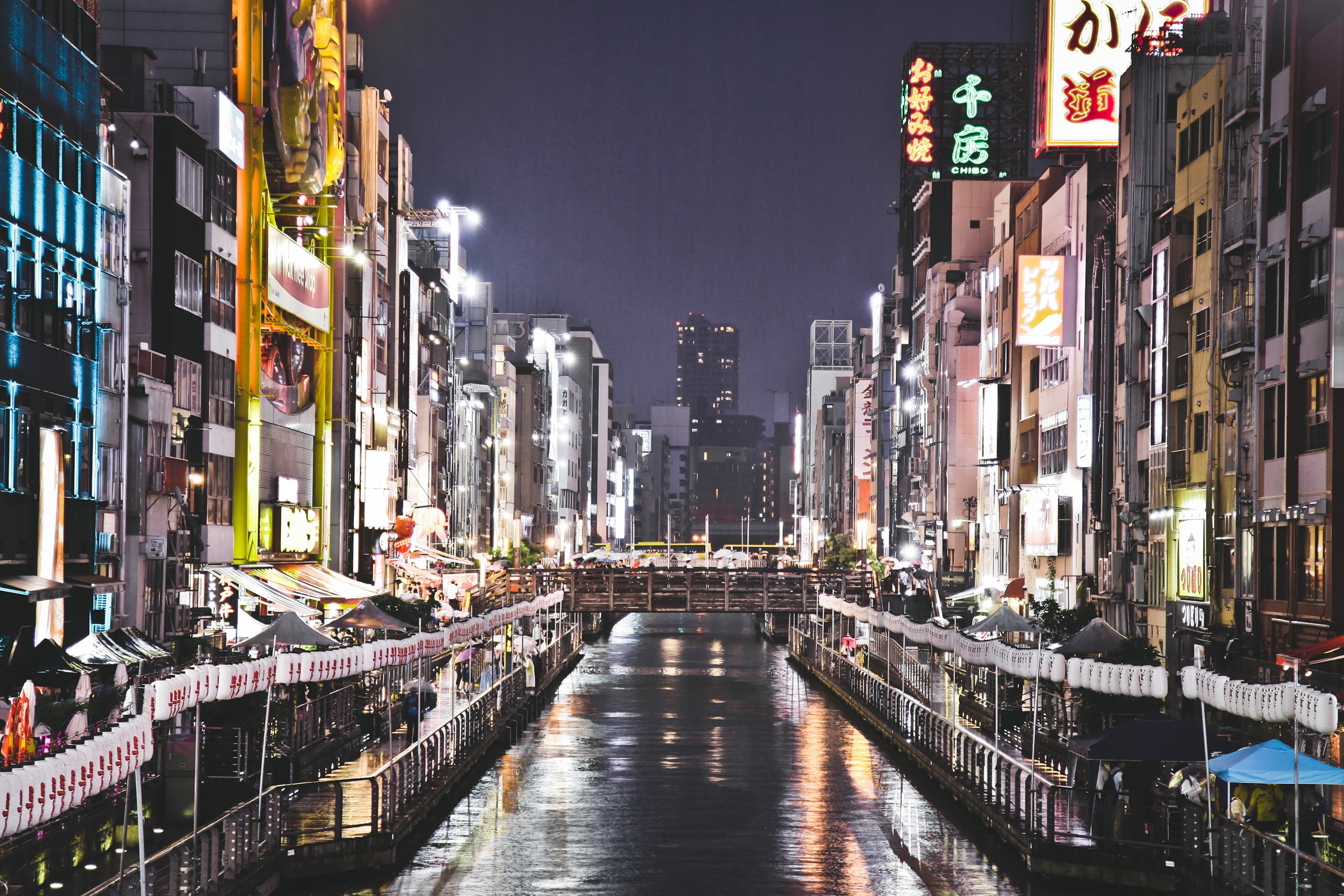
Osaka (for Kyoto), Japan
Osaka (for Kyoto), Japan
Description
For centuries, Osaka was Japan's cultural and commercial gateway to Asia - the point of entry both for trade goods and, most importantly, cultural influences that shaped Japanese society. From tea to Zen, from art to science and philosophy, Osaka was Japan's contact with the great East Asian cultures that flourished in China and Korea. The city reached its zenith in the late 16th century, when the great feudal lord Toyotomi Hideyoshi made Osaka his capital. Toyotomi was master of Japan, and an immense administrative and commercial center rapidly developed around Osaka Castle. After Toyotomi's death, the nation's seat of power shifted from Osaka to a sleepy little fishing village called Edo - modern Tokyo. While overshadowed by Tokyo, Osaka remains Japan's second largest city and a vital commercial center.
Modern Osaka is home to monuments from Japan's past including Toyotomi's immense castle and the Sumiyoshi Shrine. The city is also your gateway to Kyoto, Japan's ancient imperial capital and the nation's cultural and spiritual center.
Points of Interest
- Kiyomizu Temple
- Kinkakuji: Golden Pavilion
- Nijo Castle
- Todai-Ji Temple
- Osaka Castle
- Fushimi-Inari Shrine
- Ryoanji Temple
- Shorenin
More about Osaka (for Kyoto), Japan Points of Interest
-
Kiyomizu Temple -
Founded in 778, the temple is one of the most celebrated in Japan and renowned for its great veranda, supported by hundreds of pillars, which sticks out over the hillside, looking over Kyoto.
-
Kinkakuji: Golden Pavilion -
Set in a magnificent strolling garden, the pavilion extends over a reflecting pond and the top two floors are completely covered in gleaming gold leaf.
-
Nijo Castle -
Built by Tokugawa's first shogun, the majestic 410-year-old castle is the site of two lavish palaces.
-
Todai-Ji Temple -
Dating back to 745, records show that more than 2,600,000 people helped build the world's largest wooden building and the world's largest bronze Buddha that rests inside the Great Hall.
-
Osaka Castle -
One of Japan's most famous castles, the grounds cover 400 acres and contain 5 structures. The Castle's garden is famous for its 600 cherry trees and the site of an annual cheer blossom festival.
-
Fushimi-Inari Shrine -
One of Kyoto's oldest and most revered Shinto shrines, it holds all of Japan's 40,000 shrines dedicated to Inari, the god of rice, sake and prosperity.
-
Ryoanji Temple -
Originally built as an aristocrat's villa and converted into a Zen temple in 1450, the temple is noted for its beautiful Zen rock garden, exquisite grounds, and teahouses.
-
Shorenin -
Also known as the Awata Palace, Kyoto's 800-year-old Buddhist temple offers a contemplative escape from the everyday. Enjoy a leisurely stroll around its gardens or admire the many charming sights tucked inside.